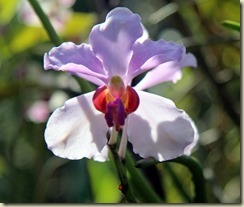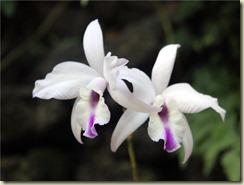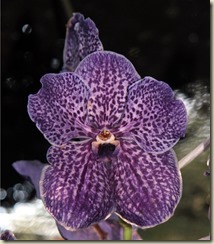
We’ve finally had enough time in Fiji to get out of passage mode. The passage from New Zealand to Fiji wasn’t one of my favorites. The rhumb line distance(shortest distance between points) is about 1,040 nautical miles. The course we laid out to take took us further east so that we could be better prepared for any northerly winds as we approached Fiji. That distance was about 1,080nm. The actual distance we travelled through the water 1,204nm.
I think the reason I didn’t like the passage – besides the early rolly conditions – was a little burn out. Before a passage I always get pretty psyched to go. Watching the weather every day looking for good exit timing, checking conditions for boats that have already left, getting meals ready, getting the boat ready for offshore, figuring out customs exit and entrance issues… On this passage we waited over 3 weeks trying to get a decent weather window to leave. Just too long for me.

Here’s the damage from getting our anchor stuck in the underwater junk in the port of Laukota where we first landed and attempted to clear in. The tabs on the right hand side where the swivel connects to the are anchor clearly bent.
The view entering the port of Lautoka. It reminds me of a Mosquito Coast Central American portscape. (click to biggerate)

Once we got into Vuda (pronounced Bunda) Point Marina and had cleared into Fiji (at least partially), I found one of the local metal workers who had a side-grinder with a cut-off wheel to cut the distorted, brand new, stainless steel swivel off the anchor. This exercise reminded me of the definition of racing sailboats: standing in a cold shower while burning hundred dollar bills.

Vuda Point is an oddball marina. It uses Med-moor style mooring, but you go into the slip bow-in. This way you won’t hit your rudder on the sloping quay wall. The little wood platform you see in this picture is where you clamber over the bow pulpit and leap each time you want to leave the boat. Leaving at low-tide requires a different set of skills than the high-tide exoduses.

The other strange thing about Vuda Marina is they store boats in holes. They dig large holes in the ground to drop boat’s keel into. Then set the boats on old tires. This is for storage during the cyclone season.

Getting on land requires stopping for lunch at a local’s stop. This one was highly recommended by our cab driver. Here’s Chris and crewmate Bill enjoying curry and large helpings of some kind of Indian-style rice.

We finally broke free of the hot and cockroach infested marina and headed out to the Mamanuca Islands about 12 miles offshore. We have a duck mascot who has lived on our transmission since we rescued him in the Ha’pai group in Tonga a few years ago. He apparently had had enough and decided to make a break for it. Using his plastic beak he chewed threw the leash we had him on and sailed away. I jumped in the dinghy and did a forced return to his perch.

Getting out to the islands meant we could get back into the 85*F water.

Some nice coral scapes
Along with a fair share of little fishes
This is a tiny, pencil thin, pipe fish of some variety.
Little blue fish
Many of you grew up with your parents telling you stories, in a effort to get you interested in nature, of how coconuts floated across thousands of miles of open ocean, only to land on small deserted islands and generate new coconut groves on those islands. Similar to the myths parents tell their young children today about global warming. The coconut story has been definitively debunked. Here you can see this tug towing a large barge overflowing with full-sized coconut trees destined for the out islands. Kind of the modern Johnny-Appleseed of the South Pacific.
While still on the mainland we did a tour of the botanical gardens. I’ll finish off this blog with soft music playing and a display of orchid diversity.






Paul




